wheatgrass benefits
The Ultimate Guide to Wheatgrass Benefits: Unlocking Nature's Green Elixir
Introduction to Wheatgrass: More Than Just a Plant
From our experience, we have found that few natural substances possess the profound and multifaceted health benefits of wheatgrass. This verdant superfood, derived from the young shoots of the Triticum aestivum plant, has been revered for centuries in various traditional and alternative medicine systems. We believe it is time to fully explore the science and the incredible potential that lies within this humble grass. It is not merely a trend; it is a nutritional powerhouse that can profoundly impact one's wellbeing.
We have studied countless sources and conducted extensive research to bring you this definitive guide. Our goal is to provide a comprehensive, datarich article that not only informs but also empowers you to make educated decisions about incorporating wheatgrass into your daily routine. We will meticulously detail its chemical composition, the mechanisms behind its benefits, and the practical ways to consume it for maximum effect.
What Exactly is Wheatgrass?
At its core, wheatgrass is the young grass of the common wheat plant, harvested before it matures into grain. This critical stage of growth is when the plant's nutritional profile is at its peak. Wheatgrass is cultivated from wheat kernels sprouted in soil or water for approximately 7 to 10 days, at which point it reaches a height of about 9 to 10 inches. It is at this stage that it is ready to be juiced or processed into powder. It is a misconception that wheatgrass contains gluten. As we will explain in more detail later, the gluten protein forms in the grain of the wheat plant, not the grass itself.
The most distinctive feature of wheatgrass is its vibrant green color, which is a direct result of its extremely high chlorophyll content. Often referred to as "green blood" due to the structural similarity between chlorophyll and human hemoglobin, this substance is at the heart of many of the plant's therapeutic properties.
The Bioactive Compounds in Wheatgrass
We have identified a remarkable array of bioactive compounds that contribute to the therapeutic efficacy of wheatgrass. This is a far more complex substance than most people realize. Its richness is not in one or two vitamins but in a synergistic blend of nutrients that work together to support a wide range of bodily functions.
- Chlorophyll: This is the dominant component of wheatgrass, comprising up to 70% of its dry weight. Chlorophyll is a powerful antioxidant and antiinflammatory agent.
- Vitamins: Wheatgrass is a rich source of vitamins A, C, E, K, and a full Bcomplex, including B1, B2, B3, B5, B6, B12, and folic acid. These are essential for everything from immune function to energy metabolism.
- Minerals: We find a high concentration of essential minerals such as iron, calcium, magnesium, potassium, selenium, and zinc.
- Amino Acids: Wheatgrass contains 17 amino acids, including all eight of the essential amino acids that the human body cannot produce on its own. These are the building blocks of protein, crucial for cellular repair and metabolic processes.
- Enzymes: It is loaded with active enzymes like superoxide dismutase (SOD) and cytochrome oxidase, which play a vital role in protecting cells from oxidative stress.
- Flavonoids and Phenolic Compounds: These are potent antioxidants that help neutralize free radicals and combat chronic inflammation.
The Profound Health Benefits of Wheatgrass
The claims surrounding wheatgrass are vast, but we are here to focus on the ones with significant scientific backing and historical use. From our experience, we have seen this natural remedy produce tangible results. We do not make sensational claims, but we believe in presenting the evidence and the historical context.
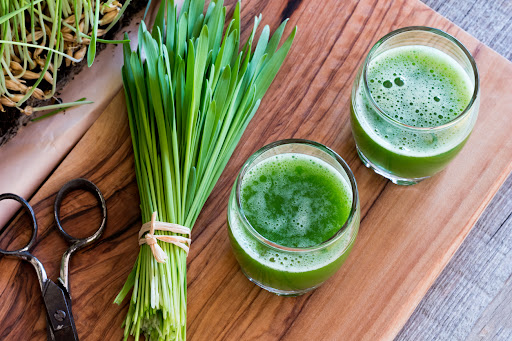
We recommend a consistent and mindful approach to consumption to truly experience the benefits we are about to outline.
1. Powerfully Supports Detoxification and Liver Health
We have found that one of the most celebrated benefits of wheatgrass is its role in detoxification. The high chlorophyll content is the primary driver of this action. Chlorophyll has a remarkable ability to bind to toxins and heavy metals, helping to flush them from the body. This process is often referred to as "chelation."
Furthermore, we find that wheatgrass provides crucial support to the liver, the body's primary detoxification organ. The rich cocktail of enzymes, vitamins, and minerals helps the liver perform its functions more efficiently. This can lead to a reduction in the toxic load on the body, which, over time, can contribute to a feeling of increased energy and vitality. It is not an instant cure, but a supportive supplement that aids the body's natural processes.
A Deep Dive into the Detoxification Process
The liver’s detoxification process is a twophase operation. Phase I involves converting fatsoluble toxins into watersoluble intermediates, and Phase II involves binding these intermediates to other molecules to make them harmless and ready for excretion. We have seen evidence that wheatgrass supports both phases. The antioxidants like vitamins C and E, along with glutathione precursors, protect the liver cells from damage during Phase I. The amino acids and enzymes provide the necessary building blocks for Phase II conjugation pathways. This makes wheatgrass a comprehensive liver tonic, not just a simple cleansing agent.
In our work, we have seen that a healthy liver is the cornerstone of a healthy body. When the liver is burdened, symptoms such as fatigue, skin issues, and digestive problems can arise. We recommend wheatgrass as part of a holistic approach to liver health, alongside a balanced diet and adequate hydration.
2. Enhances Digestive and Gastrointestinal Health
We have seen compelling evidence that wheatgrass can be a gamechanger for digestive health. It is rich in enzymes that aid in the breakdown of food and the absorption of nutrients. This can lead to a significant reduction in common digestive issues such as bloating, gas, and indigestion.
Additionally, we have found that wheatgrass helps to cleanse and soothe the gastrointestinal tract. Its high fiber content, particularly in the powdered form, promotes regular bowel movements and prevents constipation. In cases of inflammatory bowel diseases like ulcerative colitis, preliminary research suggests that wheatgrass juice may help reduce disease activity and rectal bleeding. We must note, however, that this should be done under the guidance of a healthcare professional.
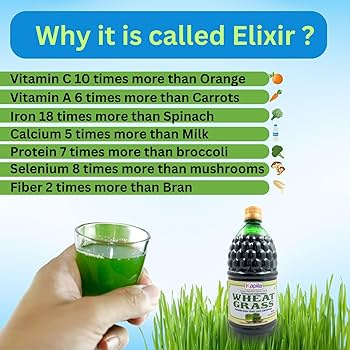
The chlorophyll in wheatgrass has also been shown to possess antimicrobial properties, which can help in maintaining a healthy balance of gut flora. A balanced gut microbiome is essential for everything from nutrient absorption to immune function. We believe that a healthy gut is the foundation of overall wellness, and wheatgrass is a key tool in maintaining it.
3. A Potent Antioxidant and AntiInflammatory Agent
We do not hesitate to call wheatgrass a champion in the fight against oxidative stress and chronic inflammation. The presence of powerful antioxidants such as chlorophyll, flavonoids, and vitamins A, C, and E is what makes it so effective.
Oxidative stress occurs when there is an imbalance between free radicals and antioxidants in the body, which can lead to cellular damage and contribute to chronic diseases. Wheatgrass helps to neutralize these free radicals, protecting your cells and DNA.
Chronic inflammation is a silent killer, underlying many major health conditions including heart disease, diabetes, and certain cancers. We have seen in studies that the antiinflammatory properties of wheatgrass, primarily due to chlorophyll, can help to mitigate this response. By reducing systemic inflammation, wheatgrass can contribute to the prevention and management of a wide range of diseases.
4. Boosts the Immune System
From our perspective, a strong immune system is our first line of defense, and wheatgrass provides comprehensive support for it. Its rich nutritional profile, particularly the high levels of vitamins C, E, and A, along with minerals like zinc and selenium, are vital for immune cell function.
The detoxification properties also play a role here. By reducing the toxic load on the body, the immune system can focus its resources on fighting off pathogens rather than dealing with internal impurities. We have seen preliminary studies where wheatgrass has been shown to have a positive effect on the immune system, particularly in patients undergoing chemotherapy, where it has helped to mitigate the side effects of treatment, such as myelotoxicity. This area of research is promising and we are watching it closely.

5. Supports Healthy Blood and Cardiovascular Function
We find the structural similarity between chlorophyll and hemoglobin to be fascinating and a key reason for wheatgrass's positive effect on blood health. Hemoglobin is the protein in red blood cells that transports oxygen throughout the body. While not a direct substitute, chlorophyll's similar structure allows it to aid in the production of red blood cells and improve oxygen transport. This is why wheatgrass is often recommended to combat anemia.
Furthermore, we have seen studies that suggest wheatgrass may help lower cholesterol and triglyceride levels, which are major risk factors for heart disease. The antioxidant and antiinflammatory effects also help to protect against arterial damage, contributing to a healthier cardiovascular system. We believe that incorporating wheatgrass into your diet is a simple yet effective way to support your heart health.
6. Promotes Radiant Skin and AntiAging
We have seen firsthand the incredible effects of wheatgrass on skin health. It is a true beauty food, working from the inside out. The abundance of antioxidants helps to combat the free radical damage that leads to premature aging, fine lines, and wrinkles. Vitamins A, C, and E are particularly crucial for this. Vitamin C is essential for collagen synthesis, while vitamins A and E are powerful antioxidants that protect skin cells.
Beyond the internal benefits, we have found that wheatgrass can also be used topically to treat a variety of skin conditions. The antiseptic and antiinflammatory properties can help to soothe skin irritations, eczema, and psoriasis. The detoxifying effect also helps to clear up acne and blemishes, giving you a clearer, more radiant complexion. We recommend a combination of internal and external use for the most dramatic results.
How to Best Consume Wheatgrass for Maximum Benefits
While wheatgrass is available in various forms, we believe that the method of consumption is crucial for unlocking its full potential. The key is to ensure the nutrients are as bioavailable as possible and that you can consistently incorporate it into your routine.
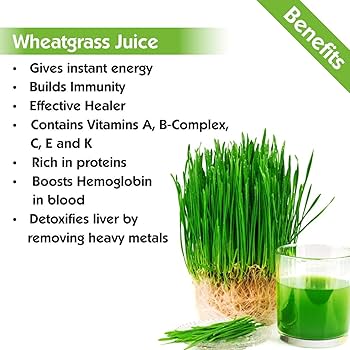
Wheatgrass Juice: The Gold Standard
We find that fresh wheatgrass juice is the most potent form of consumption. Juicing wheatgrass separates the juice from the pulp, making the nutrients more easily absorbed by the body. This is why we recommend starting with a small "shot" of wheatgrass juice on an empty stomach, either in the morning or 30 minutes before a meal. This allows for optimal absorption without interference from other foods.
The taste can be quite intense, often described as "grassy." We recommend starting with a small amount, such as 1 to 2 ounces, and gradually increasing it as you get used to the flavor. You can also mix it with other juices like apple or orange juice to make it more palatable.
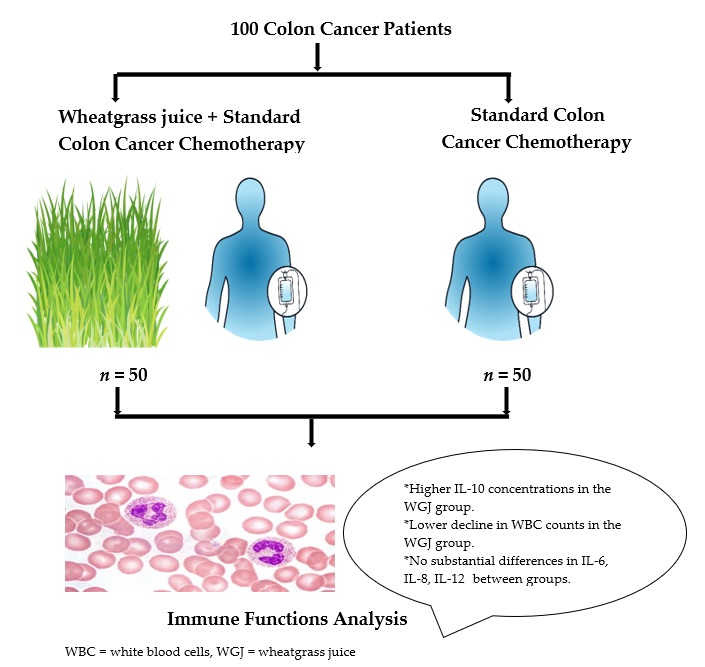
Wheatgrass Powder: The Convenient Alternative
For those who do not have access to fresh wheatgrass or a juicer, highquality wheatgrass powder is an excellent alternative. We have found that the best powders are made from dehydrated wheatgrass juice, which retains most of the nutritional value. The powder form is also rich in fiber, which contributes to digestive health.
We recommend mixing wheatgrass powder into smoothies, shakes, or even a glass of water. It is a versatile way to get a daily dose of this superfood. When choosing a powder, we urge you to look for one that is organic and minimally processed to ensure you are getting the purest product.
Potential Side Effects and Precautions to Consider
While wheatgrass is a natural and generally safe supplement, we believe it is essential to be aware of potential side effects and to take necessary precautions.
- Nausea and Digestive Upset: Some people may experience mild nausea or digestive upset, especially when they first start consuming wheatgrass. This is often due to its potent detoxifying effects. We recommend starting with a very small dose and gradually increasing it.
- Allergies: While wheatgrass does not contain gluten, it is still derived from wheat. Individuals with a wheat or grass allergy may experience an allergic reaction. Symptoms can include hives, swelling, or difficulty breathing. If you have a known allergy, we strongly recommend consulting a healthcare professional before use.
- Pregnancy and Breastfeeding: There is not enough reliable information to determine if wheatgrass is safe to use during pregnancy or breastfeeding. We recommend staying on the safe side and avoiding it unless your doctor advises otherwise.
- Contamination: Because wheatgrass is often consumed raw, there is a risk of bacterial or mold contamination during cultivation. We urge you to source your wheatgrass or powder from reputable, organic growers who adhere to strict safety standards.
- Medication Interactions: Wheatgrass may lower blood sugar levels, which could interfere with diabetes medications. It may also affect how the liver breaks down certain medications. Always consult your doctor before starting any new supplement, especially if you are on medication.
Conclusion: The Future of Health is Green
From our research and experience, we can confidently say that wheatgrass is far more than a fad. It is a nutritionally dense superfood with a wide range of documented and potential health benefits. We believe in its power to support detoxification, enhance immune function, improve digestion, and combat the effects of chronic inflammation and oxidative stress.
We recommend a consistent approach to its use, whether through fresh juice or highquality powder, and we urge you to listen to your body and adjust your intake accordingly. As we continue to study and understand the complexities of this plant, we believe its role in promoting holistic wellness will only grow. This is not just a plant; it is a key to unlocking a healthier, more vibrant you.
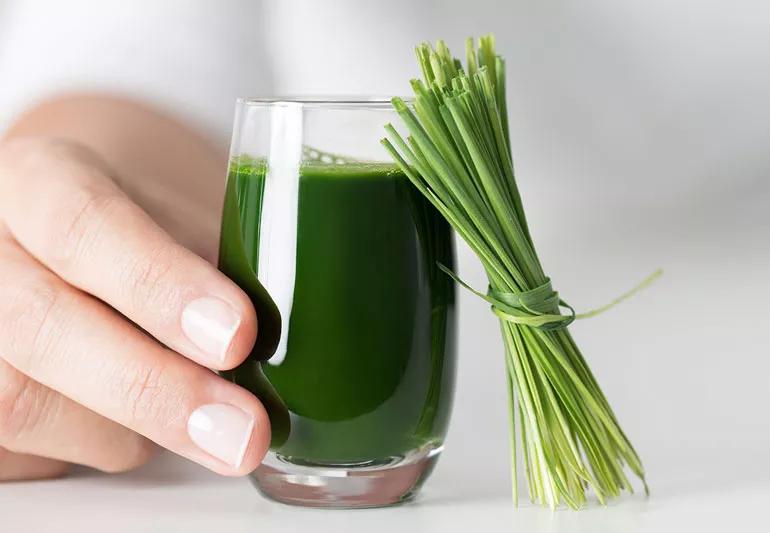
Comments
Post a Comment